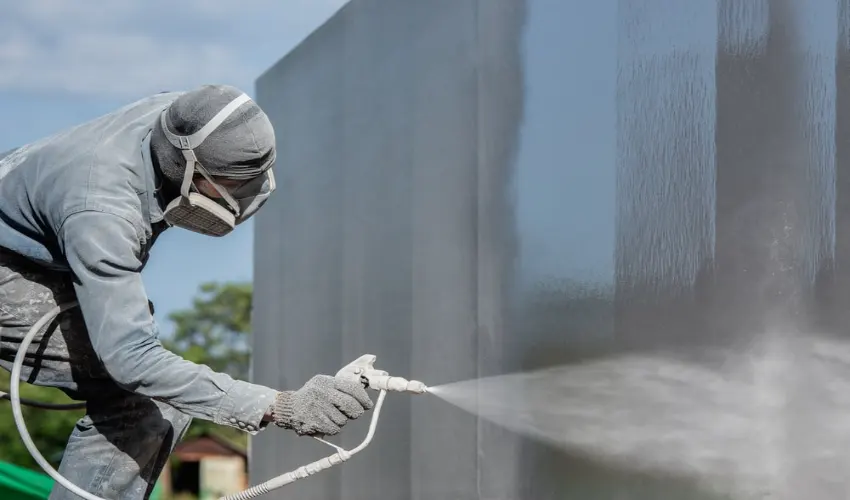Steel is one of the most widely used materials in construction, manufacturing, and engineering due to its exceptional strength, durability, and versatility. However, steel is susceptible to corrosion, a natural process that compromises its integrity over time. To combat this, protective coatings are essential. This guide provides an in-depth look into steel protective coatings, their benefits, types, and applications.
Why Steel Needs Protective Coating
Steel is prone to oxidation when exposed to moisture and oxygen, leading to rust and degradation. Corrosion not only weakens the material but also affects its appearance and functionality. Protective coatings create a barrier between steel and environmental elements, significantly extending its lifespan and maintaining its structural integrity.
The importance of protective coatings can be summarized in the following points:
- Corrosion Resistance: Protective coatings prevent rust and deterioration.
- Enhanced Durability: Coated steel withstands harsh environmental conditions better.
- Improved Aesthetics: Coatings enhance the visual appeal of steel structures.
- Cost-Effectiveness: Reduced maintenance and longer life span lower overall costs.
- Environmental Protection: Prevents leakage of harmful rust particles into the environment.
Types of Steel Protective Coatings
There are several types of anti-graffiti coating for steel, each suited for specific applications and environments. Below are the most commonly used types:
- Paint Coatings Paint is one of the most accessible and widely used protective coatings for steel. It consists of pigments, binders, and solvents that form a durable layer over the steel surface. Paint coatings are ideal for indoor and outdoor applications, providing aesthetic and functional benefits.
- Epoxy Paint: Known for its high adhesion and chemical resistance, epoxy paint is commonly used in industrial and marine environments.
- Acrylic Paint: Suitable for decorative purposes, acrylic paint offers good weather resistance and UV protection.
- Powder Coatings Powder coatings are applied as a dry powder and cured under heat to form a hard, durable layer. This method is eco-friendly as it produces minimal waste and does not require solvents.
- Benefits: Superior finish, resistance to chipping, and excellent durability.
- Applications: Used in automotive parts, appliances, and outdoor structures.
- Galvanization Galvanization involves coating steel with a layer of zinc to prevent corrosion. This is achieved through processes like hot-dip galvanizing or electro-galvanizing.
- Benefits: Long-lasting protection and low maintenance.
- Applications: Commonly used in construction materials, fences, and piping.
- Metallic Coatings Metallic coatings, such as aluminum or zinc alloys, provide exceptional corrosion resistance. They are applied through methods like thermal spraying or dipping.
- Benefits: High resistance to wear and corrosion.
- Applications: Used in high-temperature environments and heavy-duty machinery.
- Polyurethane Coatings Polyurethane coatings are known for their flexibility and resistance to abrasion and chemicals. They are often used as a topcoat over other protective layers.
- Benefits: UV stability, glossy finish, and superior toughness.
- Applications: Ideal for bridges, tanks, and pipelines.
- Ceramic Coatings Ceramic coatings are advanced materials designed for extreme environments. They offer exceptional heat resistance and are commonly used in aerospace and industrial applications.
- Benefits: High durability, thermal resistance, and corrosion protection.
- Applications: Heat exchangers, turbine blades, and automotive exhausts.
Factors to Consider When Choosing a Protective Coating
Selecting the right protective coating for steel depends on several factors:
- Environment: Consider exposure to moisture, chemicals, salt, and temperature variations.
- Durability Requirements: Determine the expected lifespan and maintenance schedule.
- Aesthetic Appeal: For visible structures, choose coatings that enhance appearance.
- Cost: Balance the initial investment with long-term benefits.
- Application Method: Assess whether the coating can be applied efficiently given the available resources.
Application Methods for Protective Coatings
The effectiveness of a protective coating largely depends on the application method. Common methods include:
- Brush and Roller Application: Suitable for small-scale projects and touch-ups.
- Spray Application: Ensures an even coating and is ideal for large or complex surfaces.
- Dipping: Involves immersing steel in a coating material, often used for galvanization.
- Electrostatic Application: Utilizes an electric charge to attract the coating material to the steel surface, ensuring uniform coverage.
Maintenance and Inspection
Regular maintenance and inspection are crucial to ensure the longevity of steel protective coatings. Common practices include:
- Visual Inspections: Check for cracks, peeling, or discoloration.
- Cleaning: Remove dirt, debris, and contaminants to preserve the coating.
- Reapplication: Reapply the coating when signs of wear are evident.
- Professional Assessment: Engage experts for detailed evaluations in critical applications.
Conclusion
Steel protective coatings are indispensable for safeguarding structures and components against corrosion and wear. By understanding the different types, application methods, and maintenance practices, industries can maximize the lifespan and performance of steel. Whether for construction, manufacturing, or industrial purposes, selecting the right coating ensures safety, durability, and cost-effectiveness.
